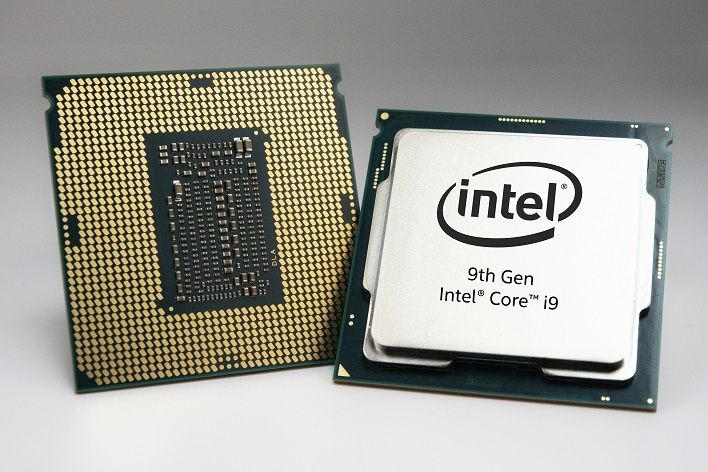

Even just enabling MCE in the BIOS landed us all core 5GHz, but tuning voltage down, we were Intel Burn Test AVX stable at 5GHz (no offset) at 1.25v and not throttling. Sandy Bridge Level Overclocking : The CPU does a 4.7Ghz all core turbo hovering at 50C with an AVX load and a Vcore of 1.23v, so it's safe to say we expected it to overclock to 5GHz with ease. We can also confirm the other 9th generation SKUs launched today also have the same STIM. "STIM": Intel's marketing aside, the removal of paste based thermal interface material for solder based material was one of the best surprise moves Intel made with the 9900K. We have no doubt that the 1920X ThreadRipper CPU would outdo the 9900K in core-based benchmarks, but in this case, for your normal consumer, the 9900K's competition is mainly other desktop CPUs. When I say consumer, I don't include high-end desktops such as X-series Intel CPUs and AMD's ThreadRipper line, but it's pretty clear that the 9900K obliterates Intel's X-series 8-core 16-thread CPU, the 7820X, in almost everything.

Performance Advantage: The 4.7GHz all core turbo, 5GHz dual-core turbo, and the high core count of the 9900K allow it to dominate any other consumer CPU. This is where you can fast forward to the final section of the review, and get a quick recap and points on the Core i9-9900K. What's Hot, What's Not & Final Thoughts What's Hot, What's Not & Final Thoughts The CPU overclocks just as easy as Sandy Bridge and to the same frequencies.

However, 100C is listed as junction temperature, so I decided to stay on the safe side of things with my CPU and not try and mess with throttle points. I think Intel has added the ability to increase TJMax to 115C from 100C because they changed from paste to solder, which is a much quicker and better way to move heat from the die to the cooler.
I9 9900k cinebench code#
It is that enthusiast thing that we all have in us, and we pay more for the privilege.A nice overclock I found was with 1.33v set with LLC Turbo level, 5.2GHz, XMP enabled, and I didn't mess with TJMax offset, although Intel has added that into the base UEFI code so you can increase it as the CPU can get pretty hot over 5GHz. And trust me, after being with him through all the pain and suffering I would gladly pay extra for KS at any time if I was building a balls to the wall system. Those $150 more are nothing.ĭon't get me wrong, he would have probably water-cooled and de-lided 9900KS but those $150 extra guarantees you that you won't get a dud. The sadness and disappointment on his face when he settled on 4.9GHz. But no matter what we did it wouldn't go past 4.9GHz all core. After days of waiting we de-lided the chip and lapped it. He always wanted a custom loop, this was an excuse to go and do it. He then went and bought a custom WC loop so we could ramp voltages a bit more without the CPU soldering itself to the motherboard, again, it wouldn't budge. No matter what we did it wouldn't go past 4.9GHz all core. I think that he got the worst 9900K on the continent. 9900K Strix Z390-E board and Kraken X62 cooler with a plan that he doesn't need 9900KS, and he will just OC 9900K close to those speeds. My very good friend saved money for months and he bought himself a new system. It is not worth it for most people but if you want to overclock and push your CPU to the edge I would recommend this over the regular one.


 0 kommentar(er)
0 kommentar(er)
